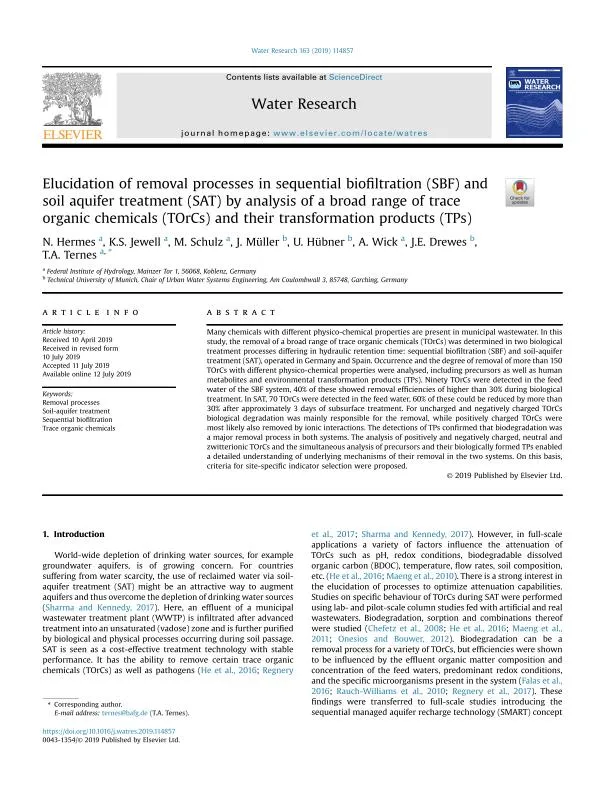Many chemicals with different physico-chemical properties are present in municipal wastewater. In this study, the removal of a broad range of trace organic chemicals (TOrCs) was determined in two biological treatment processes differing in hydraulic retention time: sequential biofiltration (SBF) and soil-aquifer treatment (SAT), operated in Germany and Spain. Occurrence and the degree of removal of more than 150 TOrCs with different physico-chemical properties were analysed, including precursors as well as human metabolites and environmental transformation products (TPs). Ninety TOrCs were detected in the feed water of the SBF system, 40% of these showed removal efficiencies of higher than 30% during biological treatment. In SAT, 70 TOrCs were detected in the feed water, 60% of these could be reduced by more than 30% after approximately 3 days of subsurface treatment. For uncharged and negatively charged TOrCs biological degradation was mainly responsible for the removal, while positively charged TOrCs were most likely also removed by ionic interactions. The detections of TPs confirmed that biodegradation was a major removal process in both systems. The analysis of positively and negatively charged, neutral and zwitterionic TOrCs and the simultaneous analysis of precursors and their biologically formed TPs enabled a detailed understanding of underlying mechanisms of their removal in the two systems. On this basis, criteria for site-specific indicator selection were proposed.
